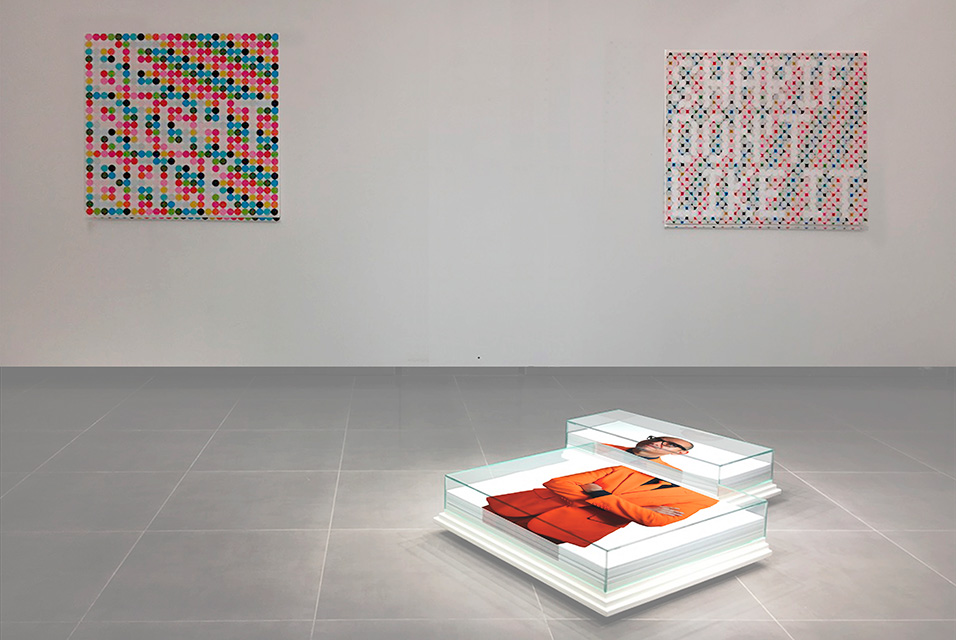Solo exhibition by Sharif Waked opens at Center for Contemporary Art Tel Aviv

Artdaily_TEL AVIV.- CCA – Center for Contemporary Art Tel Aviv opened “Balagan,” a solo exhibition by Sharif Waked (*1964, Nazareth; lives and works in Nazareth and Santa Barbara, California). “Balagan” means chaos, disarray, and confusion. The word is originally Persian – balachan [بالاخان] – and traveled across borders to other languages such as Russian, Yiddish, Lithuanian and Hebrew. Through sustained reflection on aesthetics and politics, Sharif Waked has consistently pierced the absurdities of reality with playful and estranged encounters between various temporalities, cultural-historical products, and political events.
Following the artist’s unique modus operandi, the exhibition features existing and recent pieces, linking different bodies of Waked’s work over time. In the floor installation Crop Marks (2016), Waked’s self-portrait in an orange suit, is subjected to the print-house’s ‘guillotine’, cut at his neck along the crop marks of printing and design conventions: fashion and design encounter the world of beheadings. If the video MoM – the Museum of Mosul (2017) takes the footage of ISIS’s destructive actions and reproduces it as a promotional film for a now-rebranded museum, in Bath Time (2012), a donkey takes a good shower after a long day performing as a zebra at the Gaza Zoo.
In Contribute a Better Translation No. 1 (2011), an archive of slogans of the Palestinian struggle undergo mechanized translation, and at the same time, the military surveillance of the Israeli checkpoint converges with the haute couture of the catwalk in Chic Point (2003). Beace Brocess No. 5 (2012) refracts a clip from the Camp David II 2000 peace talks into the era of silent film, whereas the Oslo Agreements of the 1990s meet the tiled mosaics of the eighth century Umayyad Caliphate [الخلافة الأمویة] in the series of works “Jericho First” (2002-ongoing).
In another series “Tughra” (2008-ongoing), Waked inserts Israeli soldiers’ most common directives in Hebrew-inflected Arabic into the sixteenth century calligraphic monogram (tughra [طغراء]) of Suleiman the Magnificent. The iconic work To Be Continued (2009) transforms the suicide bomber into the tenth century storyteller of One Thousand and One Nights, Scheherazade [شهرزاد], who kept death at bay by feeding Shahryār’s narrative curiosity. Last but not least, in the video series “Just A Moment” (2011-ongoing), various interventions meet, interrupt, and disrupt iconic archival events.
“Balagan” is also the title of a work on display in the exhibition. It is part of the series “Arabesque” (2016-ongoing) and in it – along with the series “dot.txt” (2016-ongoing) – Waked disassembles the building blocks of images to reconstruct what appear as geometric abstract surfaces. In these series, Waked questions the division between the visual and the verbal, perception and deception, the visual traditions of the past and the digital manipulations of the present, to deliver in a rather formalistic fashion the questioning, breaking, and remaking of meaning. Following these premises, “Balagan” offers a bird’s eye view of Waked’s art, surveying his work as a comprehensive whole.
